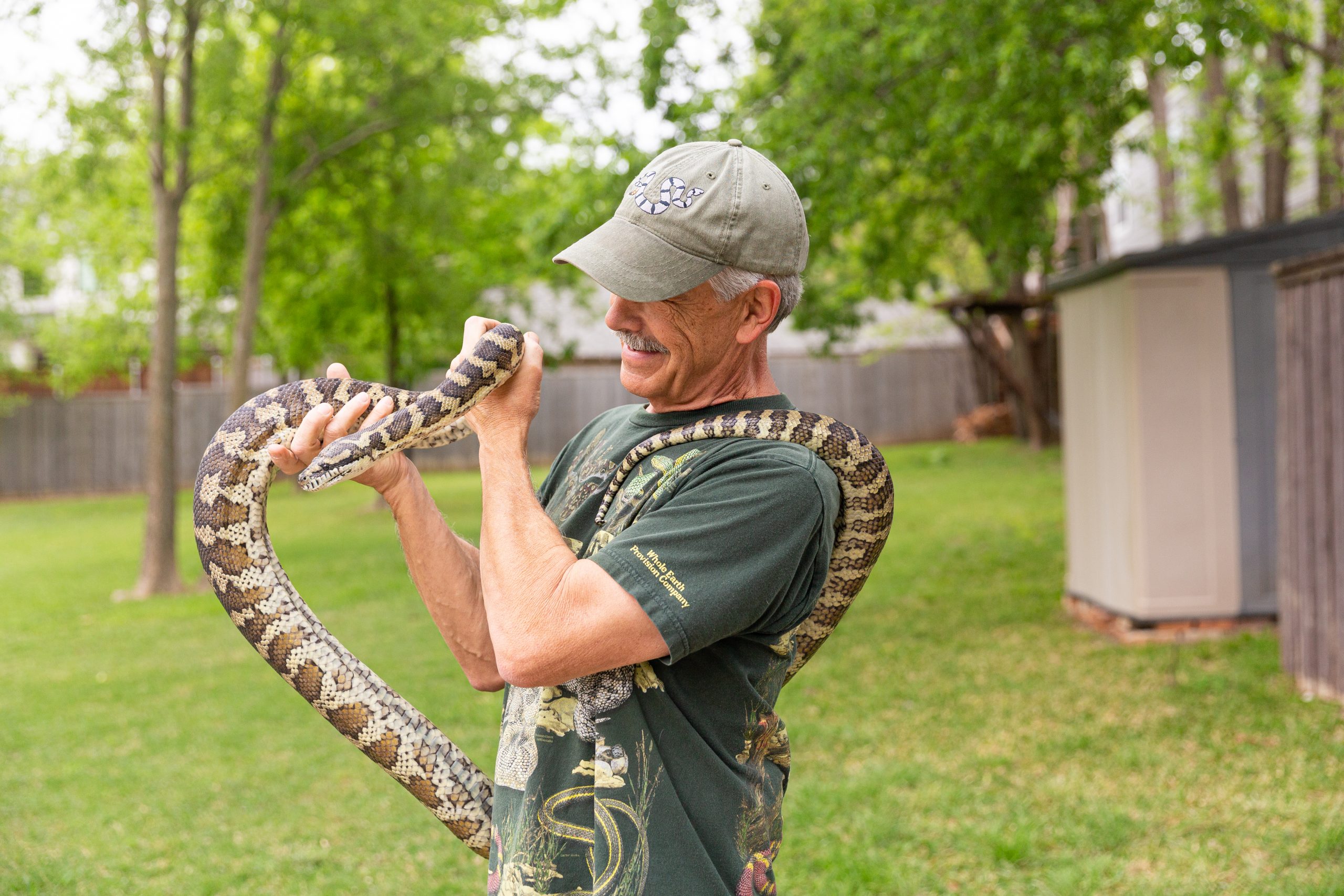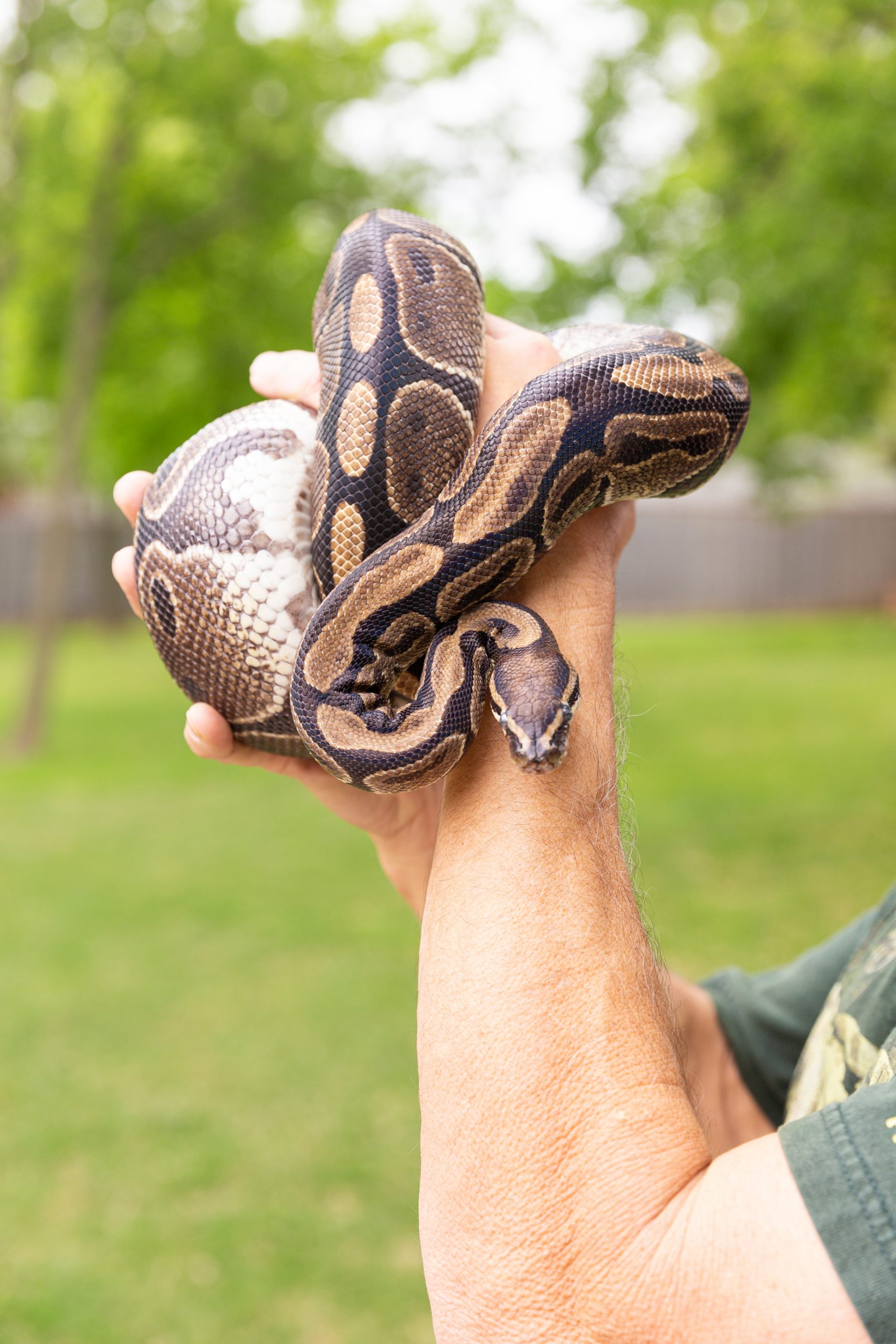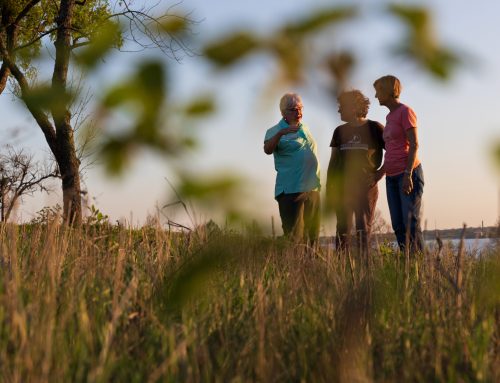
Photography by Jessica Turner
Aood news: It’s spring. Iffy news, depending on your level of ophidiophobia: The numerous snakes of East Dallas are waking up.
Oh, and they’re hungry and looking for love.
Not to worry. Lakewood Hills neighbor and snake educator Kevin “Poppi” Rudy would argue that it’s no time to panic, merely time to be aware and cautious.
Given that our area is in range of four types of venomous snakes and a fair number of nonvenomous ones, a little education and insight might be handy. Rudy’s just the person for the job. He earned a master’s in biology, served as past president of the North Texas Herpetological Society and has been an educator at several nature centers, including the Dallas Zoo and Audubon Center.
Rudy and snakes go way back. His mom would tell you they’ve fascinated him since the age of 2.

“I always liked snakes, lizards, toads, frogs, spiders, scorpions, etc., but my favorite was always snakes,” he says. “Some people are apparently born this way, and there appears to be no cure. I have been bitten and stung many times, but I still stubbornly pursue these critters.
“Snakes have a silent perfection to them. Their patterns and colors can be outrageous, or they can be so camouflaged as to be virtually impossible to see when looking right at them.”
So how best to live harmoniously with them?
Let’s start with the four venomous snakes: rattlers, cottonmouth/water moccasin, copperhead and coral snake.
“The chances of encountering any of these is essentially zero,” he says, adding that facing down a copperhead is the highest probability, especially in wild, wooded areas.
“You are much more likely to encounter nonvenomous species: Texas rat snake, harmless water snakes, Eastern hognose [and] rough greensnake — two very small brownish snakes common in flowerbeds — and a few others.”
And if you encounter a snake?
“Do not try to capture a snake unless you are sure you know what it is, which is essentially never,” he says. “The best thing would be to contact me [at DFW Wildlife Colalition], and I could help you identify it and even remove it if absolutely necessary. The best thing, in the nonvenomous case, would be to learn to live with it.”
How about White Rock Lake?
“Copperheads are sometimes seen crossing the trails,” he says. “Otherwise, the vast majority of snakes are harmless water snakes, which people always think are cottonmouths. Cottonmouths do not like open water and running-water environments.”
If you’re walking and encounter a snake, remember: “Snakes don’t get mad, and they are not aggressive,” Rudy says. “They can be afraid and defensive, especially when approached by a large potential predator. If you find yourself close to a snake, freeze. The snake will not advance or strike unless it feels further threatened and will probably move away from you. Let that happen. If the snake does not retreat, you can move very, very slowly away from the snake. Remember that most snakes can strike only about one-half of their body length.”
Say you’re zenning out on the lake, enjoying your kayak or canoe or paddle board, when you see a snake close by. No need to let the reptile interrupt your communion with nature. Snakes will likely avoid you because the snake’s brain will interpret you as a large predator.
“But their eyesight is fairly poor, and one might accidentally come toward you,” Rudy says. “Just move away from the snake or splash water so that it lands between you and the snake.”
If you’re trying to soothe your fears with the belief that all snakes are beneficial, Rudy issues this reminder: “We should try not to evaluate critters based on what good we think they do us. The same snake that eats lots of rodents might also eat songbirds. They are a part of nature, and nature works best when it has all of its representative parts working well.”





